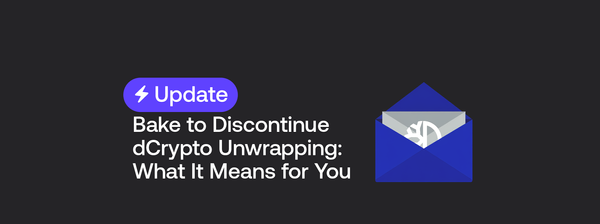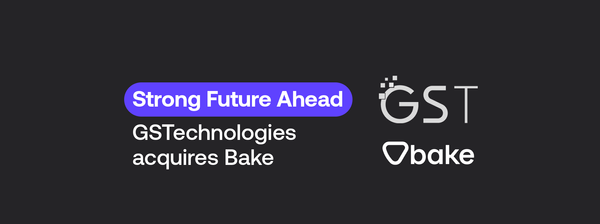Proof-of-Work vs. Proof-of-Stake: Why did Ethereum Switch to Proof-of-Stake?
The world of crypto and blockchain technology is constantly shifting and changing. New projects with groundbreaking technology seem to pop up out of nowhere, only to disappear again a few months later. Yet above it all, Ethereum stays ahead of the game with a stalwart presence, consistently driving innovation and development.
In 2022, Ethereum underwent one of its biggest transformations: the transition from a Proof-of-Work (PoW) to a Proof-of-Stake (PoS) consensus mechanism. Labeled Ethereum 2.0, the upgrade was accomplished by merging with Beacon Chain, a PoS-based blockchain.
This transformation has had significant implications for Ethereum’s functionality, security, and sustainability, as well as for the investors and users of ether (ETH), its native cryptocurrency.
But what exactly are PoW and PoS, and how do they differ? Why did Ethereum make the shift to PoS? This article will provide insights into each consensus mechanism and explore the implications PoS brings to Ethereum.
What is Proof-of-Work (PoW)?
Proof-of-Work (PoW) is the consensus mechanism originally deployed by Bitcoin and later adopted by Ethereum. In a PoW system, miners compete to solve complex mathematical puzzles to generate new blocks and validate transactions on the blockchain. This creates a fair and transparent environment where miners are rewarded based on their level of contribution.
PoW once provided a high level of security and decentralization for the Ethereum network, making it very difficult and expensive for bad actors to attack or manipulate the blockchain.
To launch a successful attack, an attacker would need to control more than half of the network hash rate (51% attack), requiring a huge amount of hardware and energy resources.
Despite its benefits, PoW had several drawbacks for Ethereum, including:
- High energy consumption: Miners needed to run powerful computers 24/7 to solve Ethereum’s complex mathematical puzzles - naturally guzzling up enormous amounts of electricity. Ethereum’s annual energy consumption under PoW was estimated at 50.63 terawatt-hours (TWh), comparable to Singapore and Bangladesh’s electricity usage.
- Environmental impact: As a result of its high energy consumption, PoW inevitably contributed to greenhouse gas emissions and climate change. According to the Cambridge Bitcoin Electricity Consumption Index, Ethereum’s carbon footprint under PoW was estimated at 23.86 million tonnes of CO2 per year, equivalent to the emissions of 5.1 million cars.
- Scalability issues: PoW limited the throughput and speed of the Ethereum network, as miners needed to find new blocks and nodes. Ethereum’s capacity was around 15 transactions per second (TPS) before switching to proof-of-stake, which was far from enough to meet the growing demand for dApps and DeFi services.
- Hardware requirements: Under PoW, Ethereum needed specialized hardware, such as GPUs or ASICs, to mine efficiently and profitably. This created a high entry barrier for new miners and reduced the accessibility and inclusiveness of the Ethereum network. It also led to hardware shortages and price inflation, affecting other industries and consumers that rely on GPUs for gaming or graphics.
What is Proof-of-Stake (PoS)?
Where PoW requires miners to put in the work to extend the blockchain, proof-of-stake (PoS) adopts an entirely different tack. PoS requires validators to stake their ETH to create new blocks and validate transactions instead.
Staking involves locking up a certain amount of ETH in a smart contract, which serves as a security deposit and a source of rewards. Validators are then randomly selected by an algorithm to propose or attest new blocks based on their stake size and other factors.
PoS resolves some of PoW’s key challenges, such as:
- Lower energy consumption: PoS is far less power-hungry than PoW, as validators neither run intensive computations nor compete for block rewards. Estimates by the Ethereum Foundation found that Ethereum’s energy consumption will eventually drop by more than 99% after its switch to PoS, making it more environmentally friendly and sustainable.
- Lower hardware requirements: As PoS does not need intensive computing hardware to function, anyone can become an Ethereum validator as long as they have 32 ETH and a basic device like a laptop.
- Higher scalability: The Ethereum network has experienced higher throughput and speed thanks to PoS. This is due to PoS reducing the complexity of creating and validating blocks. Further down the line, Ethereum will undergo a process known as danksharding. This technique is slated to split Ethereum into multiple parallel chains capable of processing several transactions simultaneously, increasing its capacity by 64 times or more.
Although PoS has drastically upgraded Ethereum’s network, it’s not without its limitations. These include:
- Higher complexity: PoS uses more sophisticated algorithms and protocols than PoW. Casper5, which is the finality mechanism that ensures blocks are irreversible and consistent across the network, is one such example. PoS also requires greater coordination and communication among validators, as they need to agree on the state of the chain to avoid forks or conflicts.
- Higher risk: PoS exposes validators to more risk than miners, as they can lose their stake if they act maliciously or negligently. For example, should a validator propose or attest invalid or conflicting blocks, they can lose part of or all of their stake (a process known as “slashing”). Penalties are also handed out when validators go MIA or fail to perform their duties.
Is Proof-of-Stake Better Than Proof-of-Work?
There is no definitive answer to this question. PoS and PoW each have their own pros and cons. While PoS is often seen as more sustainable and environmentally friendly due to its reduced energy consumption, PoW has a proven track record of security, having been the foundation of Bitcoin and Ethereum for over a decade.
The choice between PoW and PoS ultimately depends on the specific goals and priorities of a blockchain network. PoS is a better fit for Ethereum's long-term roadmap of sustainability and scalability. Conversely, PoW has its merits in other blockchains like Bitcoin, where it’s necessary to securely sequence the transaction history and make it increasingly difficult to tamper with the data over time.
Is PoS Profitable in Ethereum?
The short answer is yes. Apart from making Ethereum more energy-efficient and environmentally friendly, PoS also enables the network to drive profits for its users.
With PoS, profits primarily come from transaction fees and block rewards. Validators who actively participate in securing the network can earn rewards, but the exact returns depend on factors like the total amount staked, network activity, and the validator's uptime.
To determine the profitability of PoS over PoW in Ethereum, we need to consider several factors, such as:
- Price of ETH: This affects both the revenue and the cost of validation and mining. A higher price means higher rewards for validators and miners but also higher opportunity costs for staking.
- Network difficulty: This affects the probability of finding new blocks and earning rewards for miners. A higher difficulty means lower rewards per unit of hash rate and higher energy consumption.
- Network hash rate: This affects the competition and security of the network for miners. A higher hash rate means more miners joining the network and competing for block rewards, but also greater resistance against attacks.
- Staking rate: This affects the return and security of the network for validators. A higher staking rate means more validators joining the network and securing the chain and lower rewards per unit of stake.
- Hardware cost: This affects miners' initial investment and maintenance costs. A higher hardware cost means higher upfront and ongoing expenses for buying and running mining equipment.
- Energy cost: This affects the operational cost and environmental impact for miners. A higher energy cost means higher electricity bills and carbon emissions to power mining machines.
Based on these factors, we can estimate the profitability of PoS in Ethereum, assuming some realistic scenarios and parameters.
Taking Staking Rewards’ annual percentage rate (APR) estimate is 4.54% (accurate as of 14 Sep 23). This means a validator who stakes 32 ETH (worth about $51,849.60 at the time of writing) can expect to earn around 1.45 ETH per year before deducting any fees or costs.
However, the APR is not fixed and is subject to change depending on how much ETH is staked in the Ethereum network. As a general rule of thumb, more validators will trigger a fall in APR. At the current APR (4-5%), investors with $1,000 worth of Ethereum can expect to see a return of about $38 annually, assuming the cryptocurrency price remains stable.
PoS Paves a Brighter Future for Ethereum
While PoS and PoW each have their own advantages, PoS is best suited for the needs of Ethereum. Ethereum’s transition to PoS has been a resounding success, positioning it as one of the most energy-efficient and sustainable blockchain platforms in the world. Ethereum has also become highly inclusive, enabling anyone with access to a computer to become a validator.
You can get involved with Ethereum by using Bake to stake your ETH. Bake offers no waiting times, competitive yields, and auto-compounding, helping you earn rewards on your staked ETH quickly and efficiently.
You can even unstake your funds without waiting for a long time. Bake gives you full control over your ETH and allows you to withdraw or sell your staked ETH any time, any day.
Ready to start your ETH staking journey? Sign up to get your Bake account and start staking your ETH today.

DISCLAIMER: Please note that the information on this blog and in any articles posted on this blog is for general information only and should not be relied upon as financial advice. Cake Pte. Ltd., Bake, UAB, and its affiliates (the “Cake Group”) are not licensed financial advisers. You may wish to approach your own independent financial advisor before making any decision to buy, sell or hold any product and/or digital assets mentioned in this blog.
Any views, opinions, references, assertions of fact and/or other statements are not necessarily the views held by the Cake Group. The Cake Group disclaims any liability whatsoever that may arise out of or in connection with such statements. Always do your own research before investing in any financial assets and consult a qualified financial advisor if necessary.




